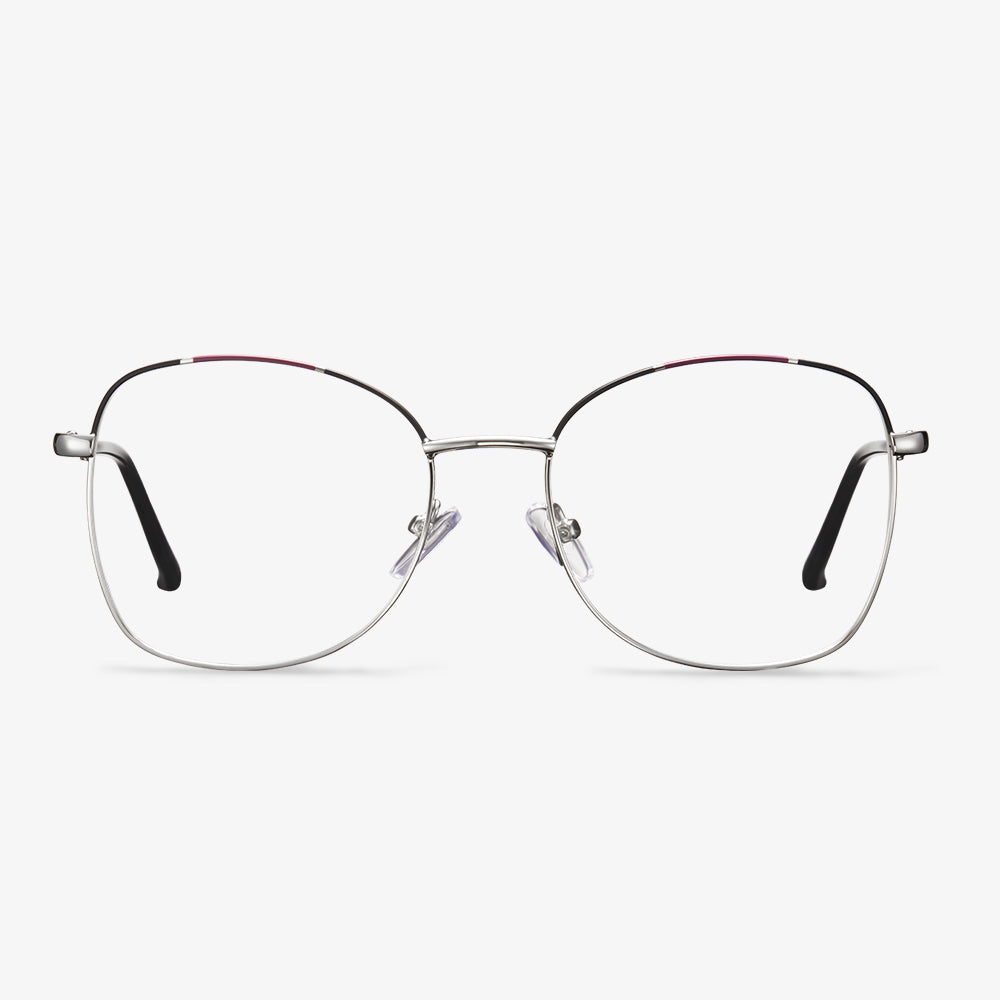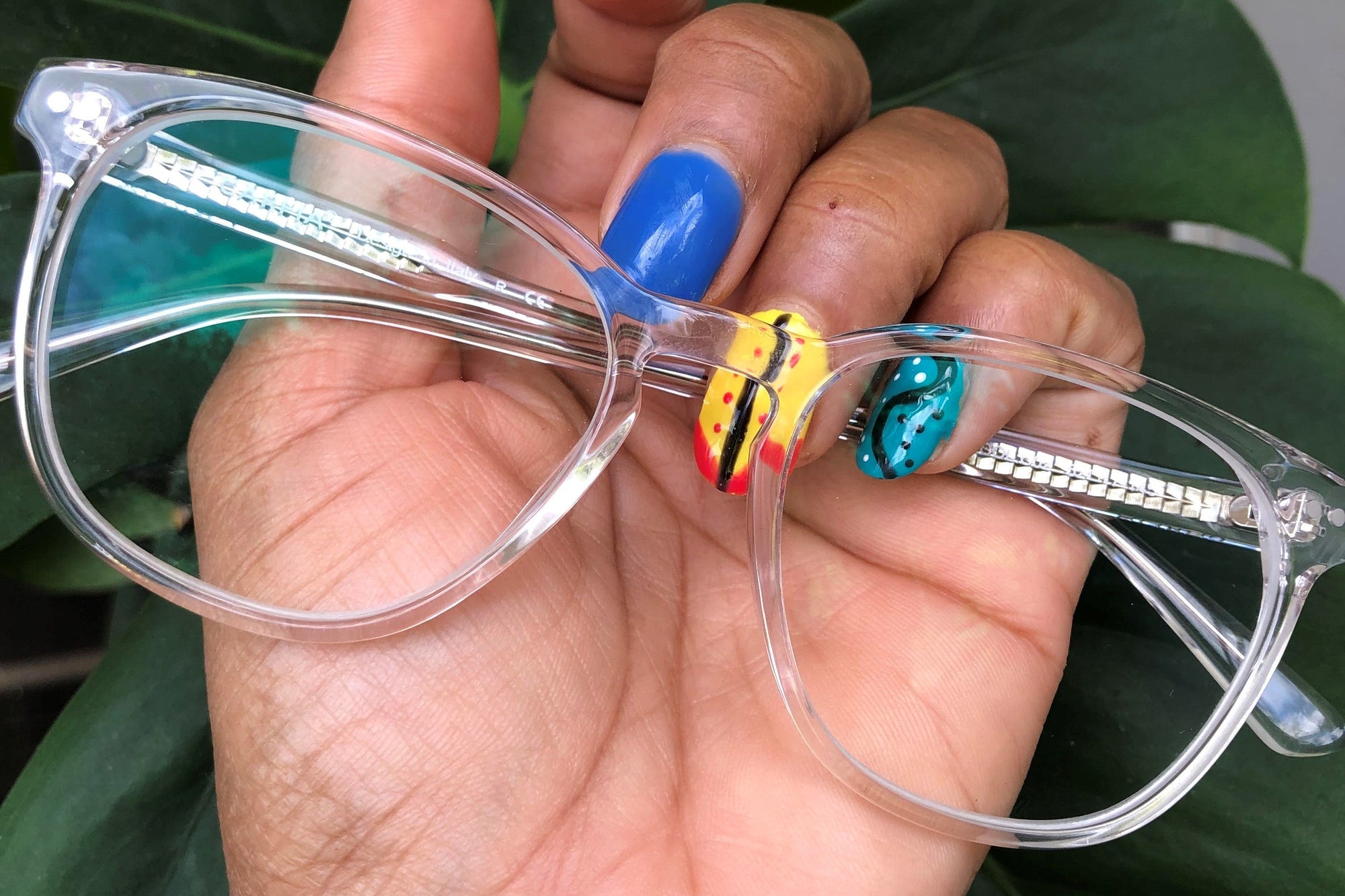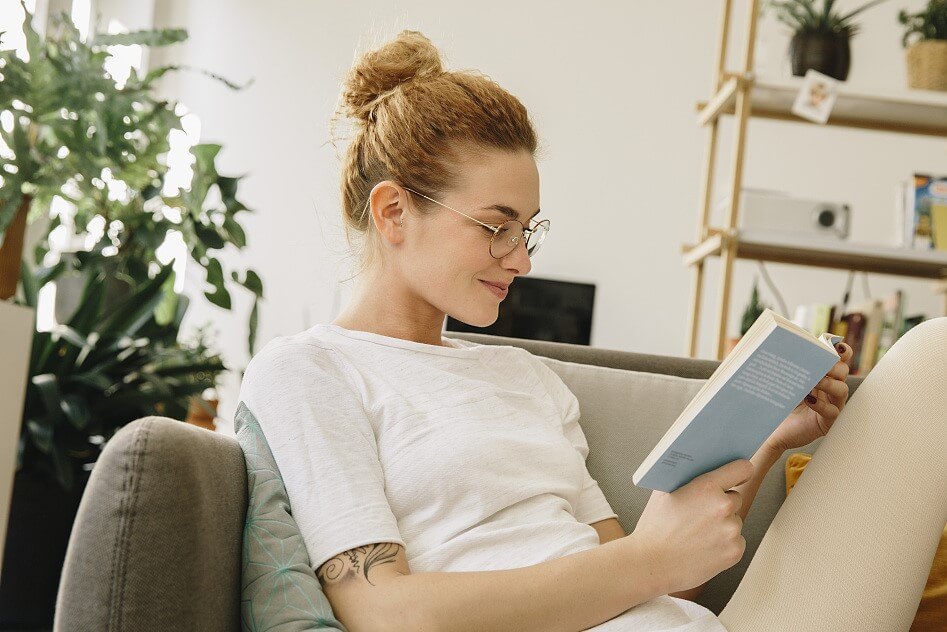Why Are My Progressive Lenses Blurry?
Progressive lenses are optical lenses designed for simultaneous correction of far, medium and near. Progressive lenses use polishing technology to achieve a gradual transition between the two focal lengths. With progressive lenses, people do not have to switch their glasses for different purposes.
However, with the usage of progressive lenses, there are some problems of progressive voices. One of the most commonly reported side effects of progressive lenses is blurry or fuzzy peripheral vision. The blurriness is usually most noticeable through the lower portion of the lens and to the left and right of near and immediate zones.
Choose the right lenses for blue light glasses.
Since visible light is made up of yellow, green, and blue light, the blue lens blocks the blue light, leaving only yellow and green light. Yellow plus green is yellow, so what we see is a yellow lens. If it is viewed from the side, we will find that the lens is also transparent, with no background color, and most of it is yellow-green. The dark yellow blue lens appears chromatic aberration, and it can be more serious. So to block blue light and do not hurt an eye again, you had better choose light yellow lenses to prevent blue light.
What is night blindness?
Diminished night vision can also be called night blindness. When you suffer from night blindness, it does not mean that you can't see anything at all at night. This means that you have difficulty driving or seeing things in dark or dim lighting conditions. Night blindness also makes it difficult for the eyes to change from bright light to dim light. This is why night driving in oncoming vehicles can be challenging for some people with night blindness.
Many people have experienced a condition called night blindness, which can make driving at night difficult. Driving glasses at night should help alleviate this situation. However, research shows that night driving glasses are generally ineffective.
If you encounter problems while driving at night, please make sure that all reflective surfaces in your car are clean and free of dirt. You should also see an ophthalmologist determine the cause of the problem. Many causes of night blindness can be easily corrected, making you and others safer during the journey.
Polycarbonate vs High Index: What Are the Differences?
Here, we will briefly show some differences between polycarbonate lenses and high index lenses. If you are looking for thinner and lighter lenses, high index lenses would be a good choice. High index lenses are strongly recommended for those people who require a strong eyeglasses prescription for common vision problems, such as nearsightedness, farsightedness, or astigmatism. Besides, you need to know that the stronger prescription, the thicker the edges of the lenses. So, high index lenses are good choices because they are slimmer and lightweight.
Polycarbonate lenses are an ideal option for children’s eyewear since they are tough, lightweight, tough, and durable. Because of their durability, polycarbonate lenses are much less likely to break or fracture than even high index lenses.
So, from the above information, you can know the differences between polycarbonate and high index lenses. With these differences, you have known how to choose the lenses when prescribing a new pair of eyeglasses.
If you want to get a pair of new eyeglasses, you can choose to go to the local optical store. However, nowadays, you can choose to prescribe glasses online. This gives you great convenience. If you want to get a pair of new glasses online, Koalaeye Optical may be a good choice for you, which is a professional optical online store, providing all kinds of glasses or sunglasses, such as blue light blocking glasses, progressive lenses, driving glasses, and so on. In addition, Koalaeye Optical provides a free shipping service.
Use your two hands to wear and take off the glasses.
When you pick and wear glasses, you need to grab the temples with both hands and take them off. When you pick and wear glasses with one hand, it is easy to cause deformation and loosening of the glasses. According to the convention of international glasses design and manufacture, you should fold the left temple first. When placing glasses, keep the convex side of the lens up to avoid scratches on the lenses.
How to Keep Glasses from Slipping
Stick-on Nose Pads
Nose pads would be a good choice to prevent glasses to slide down your nose. Hence, you can stick a pair of rubber pieces in the nose pads of your glasses or you can choose a pair of glasses with rubberized nose pads. If you want to try a pair of nose pads glasses, the Koalaeye Optical may be a good choice. The rubber nose pads will make you feel steadier and better and the additional resistance on the nose pad will surely provide more support. So, if your glasses often slip down from your nose, try this way.
Wax Coating
To keep glasses from slipping, you can try wax coating which is a smart move. Use the wax on your nose pad area along with the temple where the glasses come into contact with the skin. In general, it works fine and it is nearly invisible.
Temple Ear Hook
The temple ear hook is a good way to keep glasses from slipping. It can provide mechanical support behind the ear and you will feel the support from the back of your ears. But the drawback of the temple ear hook is that it is quite visible. When you take off the lenses, you need to lift the temple higher so that the ear hook could clear the ear’s crest. Besides, the cheaper one might cause some discomfort to the back of your ears because of the pressure.
Rubber Bands and Hair Ties
To keep glasses from slipping, you can also try hair ties and rubber bands. You can tie one around the temple tip behind your ear so that it can provide both slight mechanical support and friction forbidding your glasses from moving around. What’s more, this is a low-cost method.
What is the best lens material?
Trivex is a special material from PPG. Compared with PC lenses, the refractive index is lower (only 1.53) but the Abbe number is higher (up to 45), which results in smaller dispersion and better image quality. At the same time, the impact resistance of the Trivex lens is 10 times higher than that of the PC. It is the only explosion-proof safety lens that can withstand external force twists and turns in the market at present.


































